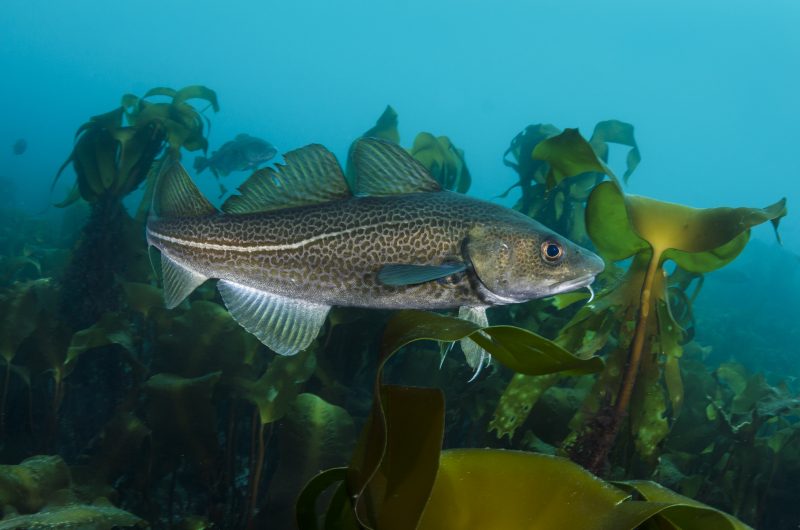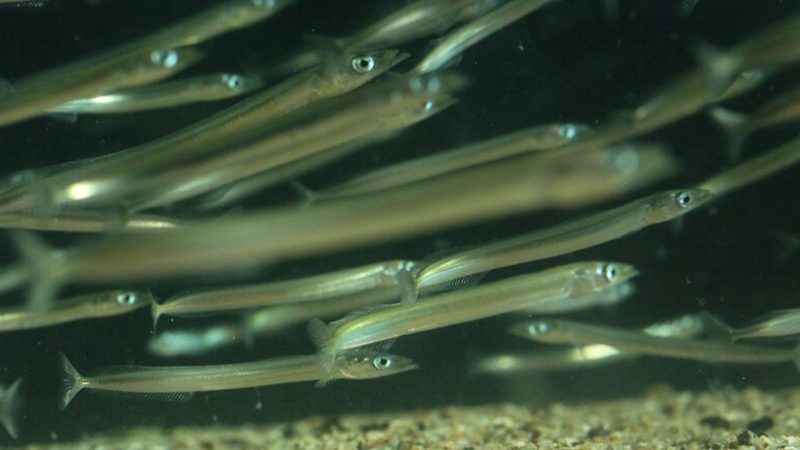Open water swimmer Sally Minty-Gravett, M.B.E. leads the first group of snorkelers across Portelet Bay to celebrate the launch of Snorkel Portelet.
Jersey’s shallow marine habitats have beauty and diversity hidden just beneath the waves and now a new snorkel trail offers residents and tourists the opportunity to explore this valuable marine environment. Created by Blue Marine Foundation, in partnership with the Societe Jersiaise and kindly supported by Mourant, the trail is the first of a network of snorkel trails planned for the Island.
Snorkel Portelet is made up of three components, the trail itself, an education programme and a citizen science portal.The self-guided trail showcases rocky reefs, kelp, sandy and a small seagrass bed. These habitats support a range of marine life with ballan and cuckoo wrasse, spider crabs and snakelocks anemones among the species for snorkelers to see. The trail sits within recently designated Portelet Bay No-Take-Zone (NTZ) – the first to be created in Jersey. The new designation means no fishing or other extractive activities can occur within the zone and it is an offence to remove any marine species with exceptions for scientific investigation.
Freddie Watson, Jersey Project Officer for Blue Marine, said “We are incredibly excited to launch Snorkel Portelet and hope it will enable people of all ages to fully immerse themselves in the marine environment. We hope it fosters appreciation for the diverse animals and habitats, from tiny gobies to slender, colourful cuckoo wrasse and thongweed, one of the longest seaweeds in UK. We are especially thrilled to be supporting schools through an education programme and hope the snorkel trail will inspire the next generation of ocean stewards”.
As part of the initiative across the summer Blue Marine is working with Bouley Bay Dive Centre to deliver an educational outreach programme that will provide underwater experiences to more than 180 children. Targeted at primary schools the programme is offering six sessions that include classroom workshops, a pool session and guided snorkel tour at Portelet Bay. Going beneath the surface to physically experience the marine world brings to life what most people will have only seen on a screen. Creating lasting memories of the natural world the programme hopes to foster a connection between Jersey’s younger generation and the seas around them.
Sally Minty-Gravett, M.B.E., who is officially opening the snorkel trail on Saturday 28 May, said “I’m very excited to get involved in the new snorkel trail. As someone who spends most of the time on the surface, it will be amazing to explore what lies underneath while having fun with others too! We cannot appreciate the underwater world without getting into it.”
Snorkel Portelet explores four areas of interest, each named after resident anemones. Information about the location, species, habitats and safety will be available on information boards in the bay as well as online.
- Snakelocks: Moving from west to east this area includes rocky reefs, fucus seaweeds, snakelocks anemones, sheltering wrasse and crabs.
- Beadlet: This section has gullies, caves, beadlet anemones, spider crabs and grey mullet.
- Dahlia: Boulders, overhangs, dahlia anemones, cervices and various types of wrasse.
- Strawberry: Lastly, rocky reefs, sandy bottoms, oarweed, strawberry anemones, a variety of gobies and blennies.
Snorkel Portelet will also enable snorkelers to become citizen scientists via a new portal, led by the Société Jersiaise. Snorkelers will be able to record the marine life they see and this in turn will help the partnership track changes in biodiversity in response to climate change.
Gareth Jeffreys, Chair of the Societe Jersiaise Marine Biology Section, said “Portelet Bay will be the first of several planned snorkel trails, but it also further establishes the bay as a natural laboratory with the launch of a citizen science program. This will allow people to record what they’ve seen and continually contribute to the wider study of the bay and the NTZ.”


















